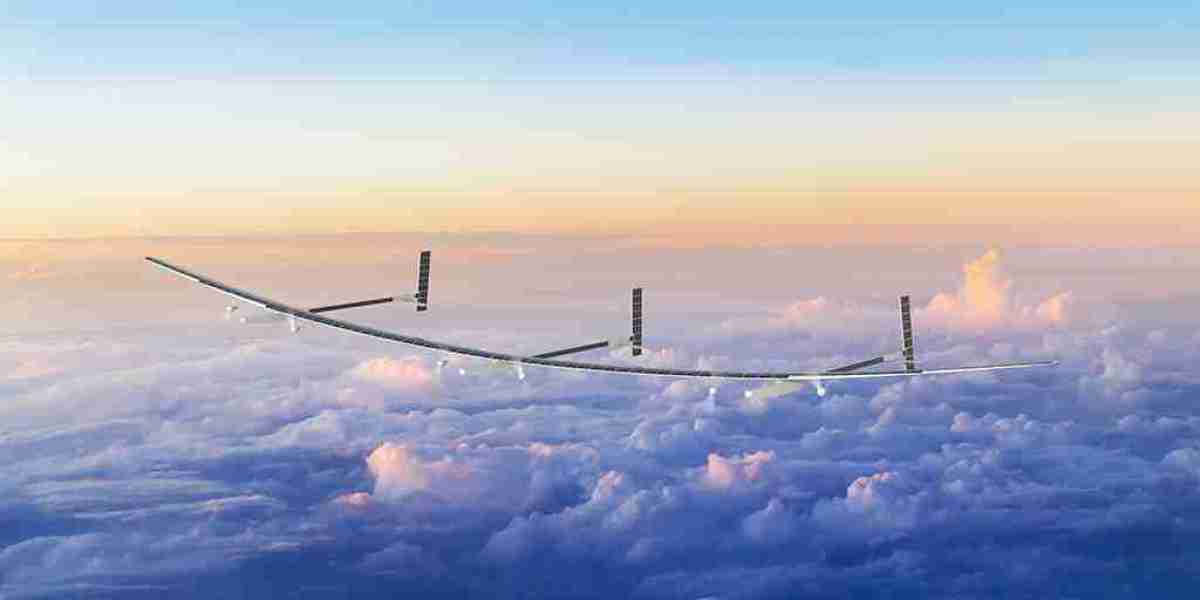Introduction
Climate change is one of the most pressing global challenges of our time, and its effects are increasingly being felt across various industries, including the burgeoning solar-powered drones market. These unmanned aerial vehicles (UAVs) powered by solar energy offer immense potential for sustainable operations, long flight durations, and reduced environmental impact. However, climate change introduces new variables that could both positively and negatively influence the growth and adoption of solar-powered drones. This article explores the key ways climate change is impacting the solar-powered drones market, highlighting both opportunities and challenges.
1. Increased Demand for Sustainable Solutions
A Growing Focus on Sustainability
As the world grapples with the consequences of climate change—such as rising temperatures, extreme weather events, and shifting ecosystems—there is an increasing demand for sustainable technologies across industries. Solar-powered drones, which offer a low-carbon alternative to traditional fuel-powered UAVs, are well-positioned to meet this demand. Solar-powered drones are seen as an eco-friendly solution that can contribute to reducing carbon emissions, making them highly attractive to industries seeking to align with sustainability goals and comply with global climate regulations.
Governments and businesses are under mounting pressure to reduce their carbon footprints, and solar-powered drones fit seamlessly into this broader push for sustainability. The environmental benefits of solar-powered UAVs, including the use of renewable energy and their minimal impact on ecosystems, make them a viable option for industries like agriculture, logistics, infrastructure inspection, and surveillance that require frequent and long-duration flights.
2. Impact of Weather Patterns on Solar Energy Generation
Inconsistent Solar Radiation
One of the primary challenges for solar-powered drones is the variability of solar energy generation, which is directly affected by weather conditions. Climate change has led to more unpredictable weather patterns, and this could impact the efficiency of solar-powered UAVs in several ways:
Increased cloud cover and precipitation: Regions that experience more frequent rainfall or extended cloudy periods may find solar-powered drones less effective due to reduced sunlight. This can reduce the ability of solar panels to generate the energy needed to keep the drone operational. For example, drones used in agricultural monitoring or environmental surveys may experience lower energy generation in areas where rainy seasons become more frequent or prolonged.
Temperature extremes: Rising temperatures due to climate change can affect the performance of both solar panels and battery systems. Excessive heat can reduce the efficiency of solar cells, leading to less energy production. Similarly, high temperatures can cause batteries to degrade faster, reducing their lifespan and operational efficiency.
These weather-related factors pose significant challenges to energy management in solar-powered drones, limiting their operational capabilities, especially in regions where climate change has intensified weather patterns.
3. Opportunities in Climate Monitoring and Disaster Response
Enhanced Role in Climate Monitoring
As the effects of climate change become more evident, the need for accurate and up-to-date climate data has never been greater. Solar-powered drones offer a cost-effective and sustainable way to monitor and collect data on environmental changes, including changes in temperature, vegetation health, air quality, and water levels. Solar-powered UAVs, with their long endurance and ability to cover vast areas, are ideal for continuous environmental monitoring, especially in remote or hard-to-reach locations.
Drones equipped with sensors and cameras can track deforestation, desertification, and glacier melting, providing valuable data that can help inform climate change mitigation strategies. Additionally, these drones can be deployed for oceanographic research, monitoring changes in sea levels, and tracking coral reef health, making them an invaluable tool in climate change research and conservation efforts.
Disaster Management and Emergency Response
Climate change has contributed to the increase in natural disasters, such as wildfires, hurricanes, floods, and earthquakes. These extreme events have made disaster management and emergency response more critical than ever. Solar-powered drones are uniquely suited for these situations because they can operate in areas where traditional vehicles may be limited by fuel constraints, especially during power outages.
Solar-powered drones can provide real-time aerial imagery and data during disasters, helping emergency responders assess damage, locate survivors, and deliver supplies to remote or inaccessible areas. Since solar-powered drones can potentially stay in the air longer than their battery-powered counterparts, they are ideal for long-duration missions, especially in disaster-stricken areas where infrastructure has been damaged or destroyed.
The use of solar-powered drones in disaster management can enhance response times, improve decision-making, and increase the effectiveness of humanitarian aid efforts. In this sense, climate change has created a growing demand for drones that are capable of operating in extreme conditions and providing critical information to aid in disaster relief.
4. Changing Agricultural Practices and Increased Demand for Solar Drones
Adapting to New Climate Conditions
Agriculture is one of the industries most directly impacted by climate change, with shifts in weather patterns affecting crop yields, water availability, and pest management. Solar-powered drones are emerging as an essential tool for farmers seeking to adapt to these changes. These drones can help monitor crop health, manage irrigation systems, and optimize pesticide use, which is critical as unpredictable weather events like droughts and floods become more common.
For example, in areas experiencing water scarcity due to changing climate patterns, solar-powered drones can help monitor soil moisture levels, allowing farmers to implement more efficient irrigation techniques. Similarly, drones can provide early warnings of potential crop diseases or pest infestations, enabling farmers to take proactive measures before a crisis occurs.
By providing valuable data and enabling precision agriculture, solar-powered drones can play a pivotal role in helping farmers manage the challenges posed by climate change, making them an essential tool for the future of farming.
5. Regulatory Challenges and Policy Impact
Climate Change Policies and Regulations
As governments worldwide implement stricter regulations to combat climate change, the solar-powered drones market is likely to benefit from policies that encourage the adoption of renewable energy technologies. These policies may include tax incentives, grants, and subsidies aimed at promoting clean energy solutions, including solar-powered UAVs.
However, some regions may also introduce regulations that restrict the use of UAVs in certain areas due to concerns about environmental impact, airspace congestion, or safety. While these regulations may hinder market growth in the short term, the increasing push for sustainability and reduced emissions could ultimately drive the regulatory environment in favor of solar-powered drones.
In addition, international agreements on climate change and carbon emissions reduction could further increase the demand for solar-powered UAVs, as industries seek more eco-friendly alternatives to traditional drone technologies.
Conclusion
The solar-powered drones market is positioned to play a key role in addressing the challenges and opportunities presented by climate change. While the unpredictable weather patterns and temperature extremes brought about by climate change pose challenges to the efficiency and reliability of solar-powered UAVs, they also create significant opportunities for these drones to be utilized in climate monitoring, disaster response, and sustainable agricultural practices.
As the effects of climate change intensify, the demand for sustainable and long-endurance UAVs like solar-powered drones is expected to grow, making them a vital tool in the fight against environmental degradation. By leveraging technological advancements in energy management, solar panel efficiency, and weather forecasting, the solar-powered drones market can continue to thrive, helping industries adapt to the ever-changing climate and contribute to a more sustainable future.




